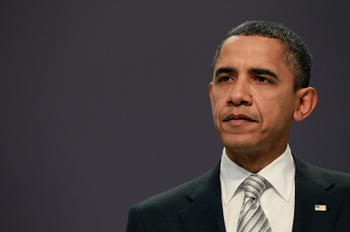
The proposed budget identifies the administration’s regulatory priorities.
The long-awaited release of President Obama’s budget will once again ignite debate in Washington, D.C. over the nation’s spending priorities. But the budget is more than a roadmap for federal spending; it also emphasizes the administration’s regulatory priorities.
In the budget, the administration touts its lodestar Executive Order 13,356 on regulatory reform, arguing that “the Administration carefully weighs the costs and benefits of rules – not by reducing difficult questions to problems of arithmetic, but by carefully weighing economic effects and also by taking into account qualitative factors, including fairness and human dignity.”
The budget then repeats a figure from the Office of Information and Regulatory Affairs’ (OIRA) 2012 draft report to Congress, which states that cumulative net benefits of major rules topped $91 billion during the first three years of the Obama Administration. Of course, under Executive Order 13,563, the work of regulatory reform is supposed to be an ongoing venture. To that effect, the budget promises to continue conducting a process of regulatory “look back.”
The spending priorities in the President’s budget will also have direct regulatory implications. Yet less than two months into the sequester, it is still not clear how frozen budget appropriations will impact new regulations. The budget does not address this issue – nor does it anticipate any slowdown in the production of new regulations.
It does, of course, request money for regulatory agencies. Below are a few highlights:
- Department of Energy (DOE): The budget requests $28.4 billion, or $2 billion more than FY 2012 actual spending for DOE. The budget states that DOE will aim to promote “energy efficiency [by] doubling U.S. renewable electricity generation [through] the Department’s clean energy technology activities.”
- Environmental Protection Agency (EPA): The budget asks for $8.2 billion, or $300 million less than EPA’s actual FY 2012 funding. The request increases funding to states and tribes by $47 million. Like the agency’s FY 2013 budget, it attempts to save $472 million by reducing funding for the Clean Water State Revolving Funds. Not surprisingly, EPA’s request also attempts to tackle climate change. It seeks $176.5 million “to provide information and tools to cut greenhouse gas emissions.”
- Department of Health and Human Services (HHS): The budget provides $80.1 billion in discretionary funding for HHS, or $3.5 billion above FY 2012 levels. HHS, which is primarily responsible for implementing the Affordable Care Act (ACA), does anticipate spending substantial resources to continue the regulatory process. According to HHS, cooperation with states and insurance marketplaces are primary goals in FY 2014.
- Department of the Treasury: The budget requests $14.2 billion for the Treasury Department, or $1.1 billion more than FY 2012 actual funding. The department must juggle the implementation of both the ACA and the Dodd-Frank Act. As the budget notes, “tax provisions play an important role in the health care law’s implementation, and many of its provisions are scheduled to take effect in 2014.”
Finally, although the budget does not direct funding to independent regulatory agencies, Congress did recently receive a separate budget request from the Commodity Futures Trading Commission (CFTC), a key agency tasked with implementing many Dodd-Frank regulations. In the past, CFTC has asked for substantial budget increases and more staff to regulate the swaps and derivatives markets. CFTC’s FY 2014 request seeks an additional $315 million in funding and no new full-time equivalent employees. However Commissioner Scott O’Malia notes in his dissent from the agency’s request that the requested level of funding is 52 percent higher than the current funding level. Commissioner Jill Sommers also dissented from the budget request.
If history is any guide, Congress is unlikely to provide a 50 percent increase for CFTC. Moreover, because of the sequester and other spending fights, other appropriated spending will likely remain stagnant. Compared with the previous four years, the pace of regulation in 2013 has not been excessive. Aside from a few major proposals, including moving to Tier 3 emissions standards and instituting the Volcker Rule, fiscal constraints will make a massive uptick in regulatory activity unlikely over the next year.




